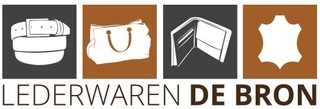
Would he exist? The perfect website? In this blog series, Baas & Baas will look at what would be the most ideal website and when we have actually achieved it. From the biggest ideas to the smallest details, we leave nothing to chance. And we start with the living site.
What does the perfect website look like?
A lot of people have a perfectionist idea at a website. Like, you build her all the way to the last detail before you put things online. And after that, you don't have to change anything. In practice, however, a website is a living thing that can change constantly. He's never really finished and always gets better. This dynamic is synonymous with success.
From this point of view, of course, the perfect website does not exist, because what is true today you might prefer to see differently tomorrow. Never mind that you want to react quickly to major business or social developments. This constant change is therefore very positive in our eyes. It indicates that the organization does not sit still and that it always adapts well; a requirement of good communication.
A good example: Apple
That doesn't mean that you have to change the look & feel every time. The visual identity of a website should be very well prepared. A great example is Apple, which many in the web construction industry consider the pinnacle. Every time you get to their online environment, it seems like nothing has changed, while all products and visuals change almost weekly. It's a sign that Apple as a company is very dynamic but is still able to always shine the same look & feel. By the way, their iconography is very important. For all their product lines, they use just a few other icons that nevertheless radiate a recognizable brand in their designs.

The little details
McKinsey's website is another example. The world's leading research and consulting firm changes its content daily. She is a spearhead of constant developments at the highest level of thought. The website therefore has all kinds of visual tricks that radiate dynamics, such as waves and lines that move along with your scroll ing behaviour. These are small and subtle so they don't slow down the site, which is very important for the reading audience. But they are undeniably the visual identity of the company.
All this makes a brand feel dynamic. So let go of the idea of a static website, which is completely finished when it is delivered. You won't regret it! And how that radiates on your brand, we're going to discuss that second in the series. For now, we have already found our first criterion for the ideal website: a website that changes often but always feels the same. A living site stands for success.Sander Baas is boss of Baas & Baas and web construction and marketing expert. Rogier van Kralingen is a writer at The Whole Story and co-author of Mediastorm.
Become an online Boss? Sign up for the newsletter!
























